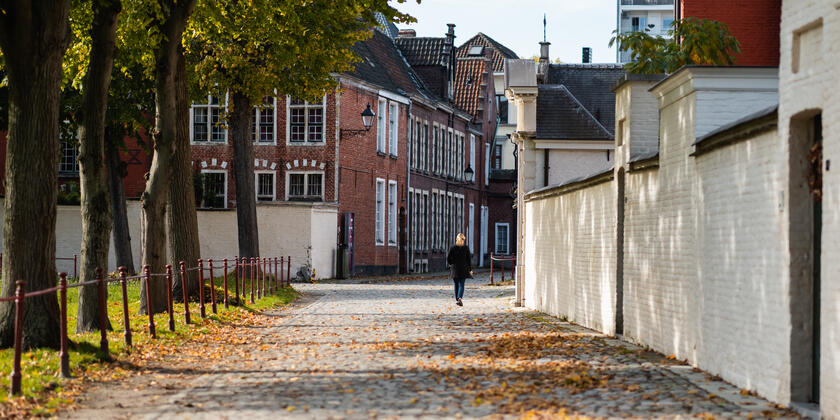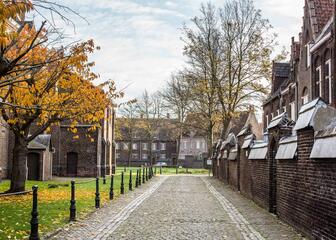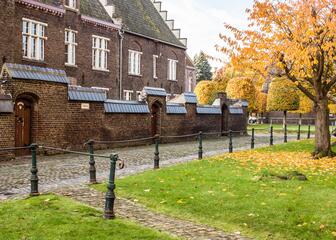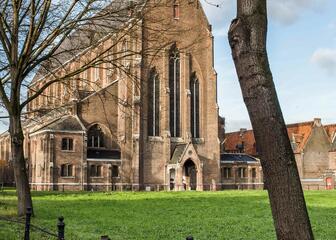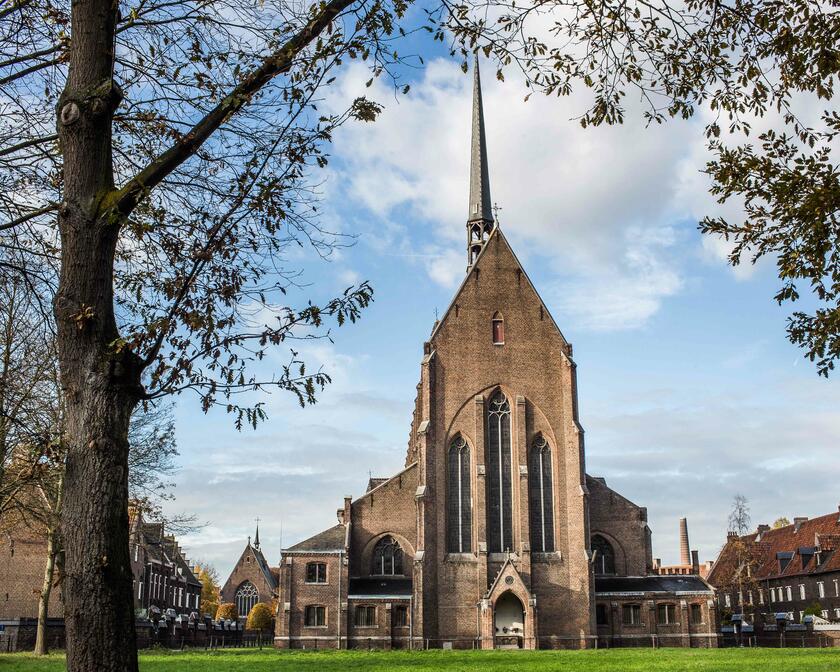
The Great St Elizabeth Beguinage was built between 1873 and 1874 in an astounding feat of construction: in less than two years, 18 contractors and 600 workers built a total of 80 houses, 14 convents, a meeting hall, an infirmary, a chapel and a church.
UNESCO site in Ghent
This is an ideal place to escape the bustling city of Ghent for a moment during your weekend break. It is an exceptionally large beguinage, just outside the city, in the Sint-Amandsberg district. Six hundred beguines once lived here, although they have been gone for many years now. Nonetheless, the calm and stillness is still unique. The Great Beguinage is one of two beguinages in Ghent that is included in the UNESCO World Heritage list.
150th anniversary of the Beguinage of Sint-Amandsberg
This year the Beguinage of Sint-Amandsberg celebrates its 150th anniversary with a programme entitled: “In de luwte van het hof” (In the shelter of the Beguinage). Starting on 21 April, the Beguinage will be the backdrop to a vast array of activities, from a summer exhibition and a flea and bric-a-brac market to musical performances and cows grazing on the bleachfield. The finale of the festive year will take place on 29 September, the actual anniversary date. On that day a procession of 300 women will march through the city to commemorate the move of the last beguines.
Opening hours
The beguinage is accessible via two entrances:
- Entrance gate in Engelberg van Arenbergstraat - open from 6 am to 11 pm
- Entrance gate in Jan Roomsstraat (only accessible for pedestrians and cyclists) - open from 6 am to 9:30 pm
